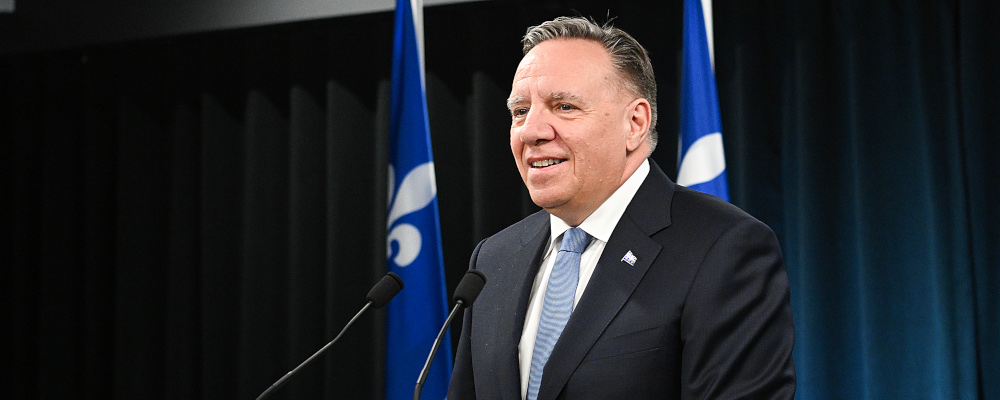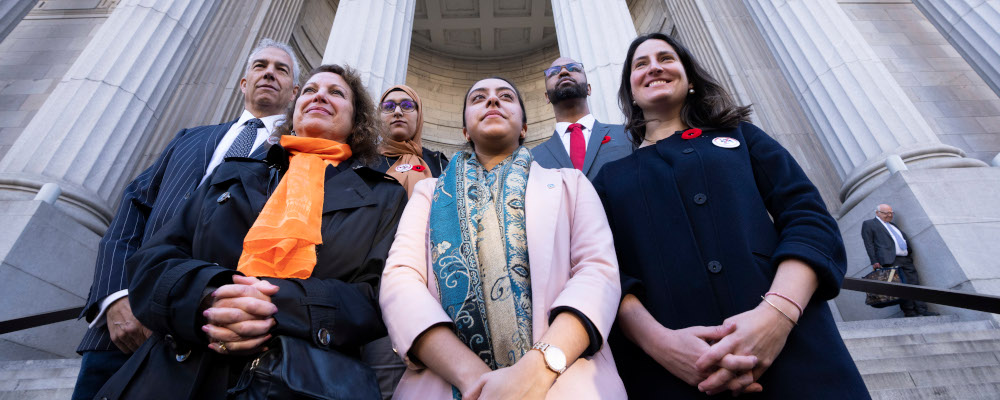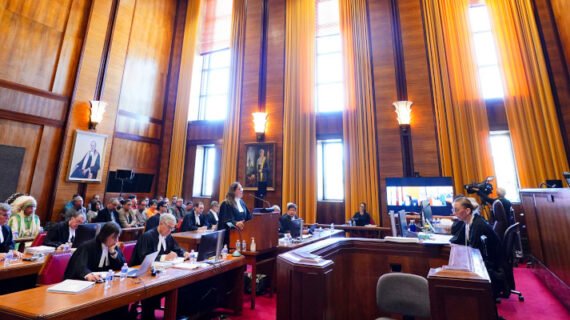On February 29, the Quebec Court of Appeal released its long-awaited decision in Hak v Attorney General of Quebec.
This decision concerns the constitutionality of Quebec’s Act respecting the laïcity of the state, also known as Bill 21, which prohibits certain kinds of government employees from wearing overt religious symbols while on the job. The bulk of the Court’s reasons, however, relate to whether courts are entitled to comment upon and possibly even issue certain kinds of remedies notwithstanding the Quebec National Assembly’s invocation of section 33 of the Canadian Charter of Rights and Freedoms, also known as the notwithstanding clause or Parliamentary Supremacy Clause.
Ultimately, the Court of Appeal upheld the orthodox reading of section 33, according to which its invocation by the National Assembly shields Bill 21 from judicial scrutiny on the grounds of section 2 and sections 7 to 15 of the Charter. This means that the Court had no power to issue a declaration concerning the law’s compliance with these sections of the Charter, and even less to award Charter damages, as some of the plaintiffs had asked it to do.
This conclusion should have been an easy one, as it conforms not only to the text and spirit of section 33, but also to the Supreme Court of Canada’s 1988 decision in Ford v Quebec (Attorney General), which remains the leading authority on the notwithstanding clause. But the opponents of Bill 21 are highly motivated. They have also had ample assistance from Canadian legal academics who have lately produced a slew of articles proposing various ways of circumventing what should be the obvious effects of section 33.
The value of the Quebec Court of Appeal’s decision in Hak, then, was not only that it reaffirmed the orthodox position, but also that it did so in the face of what can only be described as an activist-led attempt to overturn the whole of the Canadian constitutional order. What’s more, the Court’s very lengthy judgment (it clocks in at 707 paragraphs) deals with these various arguments in a detailed way. Indeed, it systematically exposes the flawed reasoning that underlies the claim that judges are empowered to peer past a legislature’s decision to use the notwithstanding clause. Here are a few highlights.

Section 33 is part of the Charter, and therefore part of Canada’s Constitution
Anyone who has spent any amount of time on what was formerly known as Canadian law Twitter (now Canadian law X) will recognize the argument that section 33 is per se illegitimate because it is at odds with the Charter or with Charter rights. Implicitly, this is the standpoint adopted by most of the critics of Bill 21 who made submissions to the Quebec Court of Appeal.
Of course, the claim that section 33 is at odds with the Charter omits the fact that section 33 is part of the Charter, and indeed part of the contingent compromise that gave us that document in the first place. Simply put, there would have been no Charter at all without the inclusion of section 33.
In Hak, the Quebec Court of Appeal rightly recognized this fact and firmly rejected the kind of sophistry that would hold parts of the Charter to be illegitimate while affirming the rest. As the Court put it, at paragraph 364:
But while it is true that “all government power must be exercised in accordance with the Constitution”, as enshrined in s. 32(1) of the Canadian Charter and s. 52(1) of the [Constitution Act 1982], and that courts “have the duty” to ensure that this power is exercised “in accordance with the Constitution”, this does not entitle courts to ignore the effects of s. 33 of the Canadian Charter and carry out a judicial review that this provision does not allow. Indeed, s. 33 is a provision of the Constitution, and its use, when made in accordance with the requirements set out in Ford, is itself in accordance with the Constitution.
Unwritten principles do not trump specific constitutional provisions
In addition to proceeding from the view that section 33 is illegitimate, because not “really” part of the Charter, most of the legal arguments that have been made against the orthodox reading of section 33 also rest upon the contention that other parts of the Canadian Constitution ought to be interpreted to narrow or even undermine section 33.
These arguments perhaps most typically allude to the so-called “unwritten principles” that have been enumerated in past judicial decisions, such as the value of the rule of law, democracy, protection of minorities, and constitutionalism. They also include appeals to supposedly pre-Charter principles pertaining to the protection of religious freedoms.
In Hak, the Quebec Court of Appeal rightly rejected these arguments, on the grounds that the unwritten principles that inform Canada’s Constitution do not provide a valid legal basis for departing from its express provisions. As the Court put it at paragraph 210, in response to arguments of this nature raised by one of the many groups who had intervened to oppose Bill 21:
In the present case, the written text of the Constitution (the Canadian Charter) guarantees freedom of religion (s. 2(a)) and expressly authorizes Parliament or a legislature to set justifiable limits to that freedom (s. 1) or to derogate therefrom (s. 33). Accepting the Fellowship’s submissions would be tantamount to disregarding this text, however clear it may be, and recognizing two separate freedoms of religion within our constitutional order: an unwritten one — which would be guaranteed implicitly by the Constitution, and with respect to which no limitations or exceptions would be permitted —and another — guaranteed expressly by the same Constitution, and which could be subject to certain restrictions or exceptions. In practice, this would mean that the freedom of religion guaranteed explicitly by a written provision of the Constitution would be less extensive or less “protected” than the freedom of religion guaranteed implicitly by the same Constitution. In a sense, the freedom of religion guaranteed implicitly by the Constitution would render the freedom of religion enshrined in the Canadian Charter redundant. This approach would therefore undermine the delimitation of that freedom “chosen by our constitutional framers”. This evidently makes no sense. The recognition of unwritten constitutional principles (such as the protection of minorities) cannot be used to “dispense with the written text of the Constitution”.
Hard cases do not offend the rule of law
As part of the broader arguments regarding unwritten principles, it was suggested by some of the opponents of Bill 21 that the fundamental vagueness of Bill 21’s provisions, including most notably its definition of what counts as a “religious symbol”, meant that it was incompatible with the rule of law, specifically.
Here too, the Court of Appeal in Hak did not hesitate to reject this argument as amounting to an attempt to circumvent concrete provisions of the Constitution through an appeal to unwritten principles. But the Court also commented on the notion of “ambiguity” and its relationship with the rule of law. As it aptly noted, neither the existence of borderline cases nor the necessity of judicial interpretation to apply an abstract statute to a given set of facts was at odds with the rule of law. To quote from paragraph 198 at length:
There are a vast number of legal rules whose applications are obvious in countless cases and whose meaning is generally self-evident to all (one might mention here, with regard to the notion of “religious symbol”, a crucifix, a cassock, a kippa or a kirpan, which the trial judge mentioned in para. 660 of his reasons). Elsewhere, and in other circumstances, the effect of these same rules may not be self-evident, and their applicability may legitimately give rise to disagreement and debate. To claim that a rule whose application is otherwise clear and easy to understand in most cases is rendered “vague” or “imprecise”, and therefore arbitrary and contrary to the rule of law, by the mere existence of less certain, or frankly doubtful, cases distorts the meaning of these concepts. Such a claim eliminates a distinction that is both necessary and universal in law. Indeed, one must distinguish between what happens before a rule is applied, and what happens when a rule — having appeared ambiguous at the time it is applied — is submitted to the appropriate decision-maker for a firm interpretation, in accordance with the rule of law, and thus a solution to the dispute. This eliminates the initial ambiguity. There is no doubt that the Act, like many other statutes, may be subjected to judicial, quasi-judicial or other interpretations. There is nothing unusual in that — nothing that would justify a declaration of unconstitutionality on account of vagueness. It simply shows that the words and passages examined here are part of a legal text that necessarily has a legal effect: they belong to a type of prose which, unlike many others, is often naturally open to interpretation because it is constantly applied to ever-changing facts.

Judges must apply the law, not question political choices
In addition to arguments concerning the role of unwritten principles, the Court of Appeal was also confronted with arguments concerning the political decisions that had led to the adoption of Bill 21.
It appears that at least some of the opponents of Bill 21 had hoped these arguments would spur the Court into overturning Ford and disregarding the invocation of section 33 in this case. As the Court framed the argument (at paragraph 303), it was being called upon to exercise its “moral duty to be bold and reverse [the Ford] precedent” given that Bill 21 “diminishes the real scope of the rights and freedoms guaranteed by the Charters.” A version of this argument is likely familiar to anyone who has lately studied in a Canadian law school.
To this the Court responded in no uncertain terms, at paragraph 304:
To be clear, we note immediately that this latter statement — while it unquestionably draws the reader’s attention — adds little, if anything, to the debate. The role of an appellate court is not to be bold. Overseeing the lawfulness of legislation and safeguarding “Charter protection[s]”, as the FAE urges the Court to do, does not entail an exercise in bravery in which the Court must be bold. When the Court declares a law unconstitutional in a given case, it is not being bold; it is quite simply performing its constitutional role.
Section 33 preserves Parliamentary supremacy
Finally, and relatedly, the Court of Appeal was confronted with the objection that Quebec had invoked section 33 pre-emptively, so as to shield Bill 21 from review before the courts had a chance to comment on it through judicial review mechanisms. Norman Siebrasse has recently made a similar objection to the pre-emptive use of section 33 in an opinion piece published at The Hub.
There is much that can be said in response to this objection, particularly in regard to the type of legislation at issue in the Hak decision. To put the point briefly, Bill 21 is an attempt at defining a certain conception of the common life. That this conception is at odds with Anglo-Canadian liberalism is obvious enough in light of the intensity of the opposition that Bill 21 has generated, particularly among members of the professional classes outside of Quebec. But it is not wrong simply because it postulates this different way of conceiving the social role and presence of religion, for example. Insofar as such legislation holds a singular importance for the kind of social vision that Quebec wants to uphold, then there is nothing especially concerning about its signalling this importance by invoking section 33, even pre-emptively.
The Quebec Court of Appeal did not comment on these competing social visions, which would no doubt have been apposite in relation to the unwritten principles of democracy and the protection of minorities, as well as another recognized unwritten principle, namely the principle of federalism. Instead, it quite rightly, and wisely, chose to respect the invocation of section 33 by deferring to the National Assembly. As it noted at paragraph 356, whether invoked pre-emptively or in response to a court ruling, the effect of invoking the notwithstanding clause is the same:
Of course, s. 33 can be used by the legislature after a court has ruled and pointed out a statute’s constitutional flaws, but it can also be used preventively, in which case it cuts short the discussion: the legislature has the last word from the outset.




